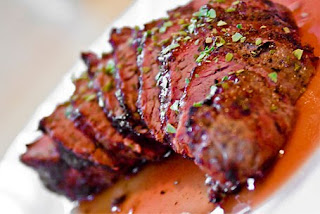





Can’t Lose Fat? Endocrine Disrupting Chemicals May Be to Blame
I came across the following article when I was browsing MSN the other day. It’s full of great information that may open your eyes to facts of which you haven’t been aware.
The following article originally appeared on MSN Health.
The New American Diet
It’s not just about calories in versus calories out.
If that were all it took to lose weight—eating a little less and exercising a little more—then weight loss would be as simple as grade-school math: Subtract Y from Z and end up with X.
But if you’ve ever followed a diet program and achieved less than your desired result, you probably came away feeling frustrated, depressed, and maybe a bit guilty. What did I do wrong?
Instead of X, it’s XXL.
Why?
Because there’s probably more at work here than just calories in/calories out. More and more research is indicating that America’s obesity crisis can’t be blamed entirely on too much fast food and too little exercise. (Or on these seven habits of highly obese people.) A third factor may be in play: a class of natural and synthetic chemicals known as endocrine-disrupting chemicals (EDCs), or as researchers have begun to call them, obesogens.
Muffintop Cant Lose Fat? Endocrine Disrupting Chemicals May Be to Blame
The new weight-gain threat
Obesogens are chemicals that disrupt the function of hormonal systems; many researchers believe they lead to weight gain and, in turn, numerous diseases that curse the American populace. They enter our bodies from a variety of sources—natural hormones found in soy products, hormones administered to animals, plastics in some food and drink packaging, ingredients added to processed foods, and pesticides sprayed on produce. They act in a variety of ways: by mimicking human hormones such as estrogen, by misprogramming stem cells to become fat cells and, researchers think, by altering the function of genes.
Endocrine disruptors are suspected of playing a role in fertility problems, genital malformation, reduced male birth rates, precocious puberty, miscarriage, behavior problems, brain abnormalities, impaired immune function, various cancers, and cardiovascular disease. “We have data linking environmental chemicals to practically every major human disease, from cardiovascular disease to attention-deficit disorder,” says Jerry Heindel, Ph.D., an expert on EDCs at the National Institute of Environmental Health Sciences (NIEHS).
Now new research is finding that some EDCs, the obesogens, may be helping to make us fat. This field of research is dominated by animal and test-tube studies. And while researchers note that the known effects of many obesogens are more potent in the unborn and newly born, some suspect a similar impact on adults.
This combination of factors, along with our growing tendency to put on weight, is what we call the obesogen effect. Understanding it could be the key to freeing ourselves from weight gain and the other hazards of these chemicals.
Why traditional diets don’t work
Decades ago, before big, soft guts were the norm in the United States, we referred to overweight people as having “glandular problems.” Their weight was not their fault, doctors explained; their bodies just didn’t have the ability to fight off weight gain like most people’s bodies did.
We don’t use that polite phrase any longer. What changed? Now that about two-thirds of American adults are overweight or obese, did those folks with “glandular problems” disappear? No; it’s just that many others have caught the same disease. Thanks to the obesogen effect, we may all be at risk for some glandular problems.
magnuson fat family Cant Lose Fat? Endocrine Disrupting Chemicals May Be to Blame
The average American family.
Because it’s probably been a while since you took high-school anatomy, here’s a quick refresher: Your endocrine system is the contingent of glands producing the hormones that regulate your body. Growth and development, sexual function, reproductive processes, mood, sleep, hunger, stress, metabolism—they’re all controlled by hormones. And the pancreas, hypothalamus, adrenal glands, thyroid, pituitary gland, and testes are all part of that system. So whether you’re male or female, tall or short, hirsute or hairless, lean or heavy—that’s all determined in a big way by your endocrine system.
Your endocrine system is a finely tuned instrument that can easily be thrown out of kilter. “Obesogens are thought to act by hijacking the regulatory systems that control body weight,” says Frederick vom Saal, Ph.D., curators’ professor of biological sciences at the University of Missouri. “And any chemical that interferes with body weight is an endocrine disruptor.”
That’s why obesogens seem to be good at making us fat—and why researchers are so bent on uncovering the truth about these chemicals. The NIEHS is funding studies that target them. The Endocrine Society, the largest organization for hormone research and clinical endocrinology, has also noted the connection. “The rise in the incidence in obesity matches the rise in the use and distribution of industrial chemicals that may be playing a role in generation of obesity,” it stated in a recent report, “suggesting that EDCs may be linked to this epidemic.”
That’s one reason weight-loss advice may not always work. In fact, even strictly following the smartest traditional advice won’t lower your obesogen exposure. See, an apple a day may have kept the doctor away 150 years ago. But if that apple now comes with chemicals believed to promote obesity, then that advice is way out of date. In fact, apples have been named one of the most pesticide-laden produce choices out there.
The obesogen effect may be part of the reason why traditional dieting practices—choosing chicken over beef, eating more fish, loading up on fruits and vegetables—may not work anymore.
But as we began researching our book, The New American Diet, we found some good news: There’s no reason why our favorite foods—steak, burgers, pasta, ice cream—can’t be part of a reasonable weight-loss program. We just need to move past the old thinking, and adopt some new laws of leanness.
Leanness Law 1: Know when to go organic
Every day the average American is exposed to an estimated 10 to 13 different pesticides and/or their metabolites (breakdown products) through food, beverages, and drinking water.
Some of those chemicals can mimic estrogen during development, which can lead to weight gain later in life. Others can spur unnecessary fat-cell formation at any age. At the University of California at Irvine, Bruce Blumberg, Ph.D., recently reported that prenatal exposure to obesogens among mice can predispose them to weight gain later in life. The effect is likely the same in humans. In one study, the adult daughters of women who had the highest levels of DDE (a breakdown product of the pesticide DDT) in their blood during childbearing years were found to be 20 pounds heavier, on average, than daughters of women who had the least.
And the evidence continues to accumulate.
* Researchers have noted a link between organochlorine pesticides and impaired thyroid function. According to the Endocrine Society’s 2009 report on EDCs, changes in thyroid function can result in metabolic effects. Indeed, the authors of a 2009 Thyroid Research article cited hypothyroidism, a symptom of which can be weight gain, as a possible effect of organochlorines on the thyroid.
* The authors of a study in the journal BioScience found that tributyltin, a fungicide, activates components in human cells known as retinoid X receptors, which are part of the metabolic pathway necessary for fat-cell formation. They also found that tributyltin causes the growth of fat cells in mice exposed to it. Although tributyltin is no longer used on crops, experts suspect that a similar compound still used on produce, fenbutatin, is at least as potent.
* The authors of a recent study in Molecular and Cellular Endocrinology note that organophosphates and carbamates, two common classes of pesticides, cause obesity in animals.
But there is some hopeful research; a study in the journal Environmental Health Perspectives found that children who ate fruits and vegetables free of organophosphorous pesticides for just five days reduced their urine concentrations of those pesticides to undetectable levels.
organic summer fruit basket 1 main Full Cant Lose Fat? Endocrine Disrupting Chemicals May Be to Blame
According to the Environmental Working Group, you can reduce your pesticide exposure by nearly 80 percent simply by choosing organic versions of the 12 fruits and vegetables shown in its tests to contain the highest pesticide load. The group calls them the Dirty Dozen: In order of pesticide load, they are peaches, apples, bell peppers, celery, nectarines, strawberries, cherries, kale, lettuce, imported grapes, carrots, and pears.
There’s a Clean Fifteen, too, a group of conventionally grown fruits and vegetables with the least pesticide residue: onions, avocados, sweet corn, pineapples, mangoes, asparagus, sweet peas, kiwis, cabbages, eggplants, papayas, watermelons, broccoli, tomatoes, and sweet potatoes.
Leanness Law 2: Stop eating plastic
You’re thinking, “Well, I don’t generally eat plastic.”
Ah, but you do.
Chances are you’re among the 93 percent of Americans with detectable levels of bisphenol A (BPA) in their bodies, and you’re also among the 75-plus percent of Americans with detectable levels of phthalates in their urine. Both of these synthetic chemicals, found in plastics, mimic estrogen. And like some pesticides, these chemicals can predispose your body from an early age to gain fat.
How do they end up inside you? Mostly through what you eat and drink: Phthalates can be found in food packaging, plastic wraps, and pesticides, as well as children’s toys, PVC pipe, and medical supplies. Each year, about 18 billion pounds of phthalate esters are created worldwide, and they can easily leach into your body.
More than 6 billion pounds of BPA, found in polycarbonate plastics and epoxy resins, is produced every year; it leaches from food and drink packaging, baby bottles, cans, and bottle tops. Pop the top off a jar of tomato sauce and check out the resin on the inside of the cap—that’s where the BPA comes from. A recent study published on BPA’s effects on humans found that workers exposed to BPA at Chinese factories had more than four times the risk of erection difficulties. (Japan reduced the use of BPA in cans between 1998 and 2003; as a result, measures of BPA in some Japanese populations dropped more than 50 percent.)
According to the Environmental Working Group, canned chicken soup, infant formula, and ravioli have BPA levels of the highest concern. And your sturdy reusable water bottle? After people drank out of a polycarbonate bottle (usually stamped with a 7 on the bottom) for just one week, their BPA levels jumped by nearly 70 percent, according to a seminal study from Harvard University and the Centers for Disease Control and Prevention.
ChickenBroth 400 Cant Lose Fat? Endocrine Disrupting Chemicals May Be to Blame
It may look innocent...
Here’s how you can limit your exposure.
* Follow vom Saal’s rule: “No plastic item ever goes into the oven or the microwave.” Heat can damage plastic and increase leaching.
* Avoid plastic-wrapped meat. “The plastic wrap used at the supermarket is mostly PVC, whereas the plastic wrap you buy to wrap things at home is increasingly made from polyethylene,” vom Saal says. PVC contains phthalates that, according to animal studies, may lower testosterone levels. In humans, lower testosterone leads to weight gain as well as a decrease in muscle mass and sex drive. Go to a butcher who uses paper instead.
* Cut down on canned goods like tuna, and buy frozen vegetables in bags instead of canned produce. Consider buying Eden Foods canned beans and jarred foods, which are in BPA-free packaging.
* Use a nonplastic mug whenever you can. And for good measure, avoid drinking coffee or other hot beverages out of Styrofoam, which can leach styrene, a compound linked to cancer.
Leanness Law 3: Don’t eat the Viking
When was the last time you took a dose of weight-promoting hormones?
OK, when was the last time you ate a burger?
The answer to both questions may well be the same. Every time you eat conventionally grown beef, there’s a chance you’re eating weight-gain hormones—a potential cocktail of natural and synthetic obesogens. In fact, a report in the International Journal of Obesity by researchers at 10 universities, including Yale, Johns Hopkins, and Cornell, notes that the use of hormones in meat could be a contributing factor to the obesity epidemic.
A 1999 European study concluded that people who eat meat from cattle treated with growth hormones are taking in hormones and their metabolites: estrogens in the range of 1 to 84 nanograms per person per day, progesterone (64 to 467 ng), and testosterone (5 to 189 ng).
filetsteak1 Cant Lose Fat? Endocrine Disrupting Chemicals May Be to Blame
If it's not grass fed and organic, just say no!
A nanogram is a billionth of a gram: That’s tiny. But it may be enough to disrupt the way your hormone system operates, research indicates. Some experts believe that certain obesogens exert influence at below 1 part per billion. And small amounts from many sources add up over time.
Perhaps even more worrisome are the potent synthetic steroids we ingest from beef. Trenbolone acetate is an anabolic steroid estimated to be eight to 10 times as potent as testosterone, which is an endocrine-disrupting chemical by definition. “This cocktail of hormones given to beef has huge consequences,” vom Saal says. We know what happens to the body when it receives large doses of steroids over a short period of time, but there is no research on the effects of small doses over years.
To bring this all home, imagine you’ve been in a terrible plane crash in the Andes, like those poor souls depicted in the movie Alive. The only way to survive is to pick one of the dead folks to eat. You’re given the choice of an obese, grotesquely muscled, man-boob-toting Minnesota Vikings lineman with shrunken testicles who’s been injecting himself with hormones for a dozen years, or someone of normal size and body type and hormonal function. (One of the Kardashian sisters, maybe.) Which would you choose?
Well, every time you eat conventionally raised beef, you’re choosing the Viking.
There’s a better way. Organic beef has none of the weight-promoting steroid hormones of conventional beef, while grass-fed beef has been found to have more omega-3s and more conjugated linoleic acid (CLA). CLA is a fatty-acid mixture that’s been linked to protection against cardiovascular disease and diabetes; it can also help you lose weight, according to a meta-analysis in the American Journal of Clinical Nutrition.
Similarly, conventionally raised dairy cows are often given hormones to produce more milk, which may lead to some nutrient dilution. Grass grazing, however, may increase omega-3 content in milk. By choosing to eat and drink more omega-3s, more CLA, and more nutrients, you’re choosing to fill your body with more nutrition—feeding your brain, fueling weight loss, and keeping hunger at bay.
Leanness Law 4: Beware of the sneaky saboteurs
Ingesting pesticides, growth hormones, and plastic-based chemicals obviously isn’t a good idea. But other, sneakier obesogens are at work. We’re talking about high-fructose corn syrup (HFCS) and soy, which are added into your diet and the diet of the animals you eat, and which carry or are converted into natural obesogens.
But wait: Isn’t soy good for your heart? Not necessarily. A review in the American Heart Association’s journal Circulation notes that soy protein can lower LDL cholesterol, but only a measly 3 percent. You’d have to eat the equivalent of 2 pounds of tofu a day to reap that benefit. As a result, the AHA withdrew support for definitive health claims for soy protein and coronary heart disease. Yet soy is in hiding in everything from cookies to french fries to salad dressing.
soy Cant Lose Fat? Endocrine Disrupting Chemicals May Be to Blame
Still eating soy? You may want to reconsider.
The result of all that extra soy could be—get ready for it—more fat. This is particularly true for people who were given soy-based formula as infants. You see, soy contains two naturally occurring chemicals, genistein and daidzein, both of which are estrogenics, which can spur the formation of fat cells.
But wait! Guess who else is on a soy diet? Elsie, Wilbur, and Chicken Little—the animals we depend on for food. (Many fish, too, are chowing down on soy.) Chickens that once ate natural grasses and forage now feed on a high-energy diet of which soybean meal is a large component.
According to British researchers, this type of diet is partly to blame for the fact that some modern chickens contain two to three times as many calories from fat as from protein. (That’s right: The chicken’s proportion of muscle is dropping, just like ours! Sounds like the obesogen effect.)
So when you eat modern, supermarket chicken and beef you’re eating more fat, less protein, and more obesogens.
High-fructose corn syrup, too, has been fingered by some experts as a possible player in the obesity crisis. HFCS is found in countless items, from bread to ketchup to Life Savers to cough medicine. Recent research indicates that a diet high in HFCS may trick your brain into craving more food even when you don’t need it. And preliminary research indicates that HFCS may even play a role in disrupting the endocrine system, says Robert Lustig, M.D., a pediatric endocrinologist at UCSF. In overweight people, it interferes with leptin, a hormone that regulates appetite.
Is all this a bit disturbing? You bet. Depressing? Not at all. Because you can reconsider the old weight-loss advice—the “diet wisdom” that told you to stop eating burgers, pasta, and ice cream—and go back to eating what you love. Of course, you should eat reasonably-sized portions. But the key is to eat natural, obesogen-free versions. Do this while keeping up your exercise program and over time you’ll see results. Your waistline, your tastebuds, and even your muscles and libido will thank you.
Adapted from The New American Diet (Rodale 2009), available at bookstores and at NewAmDiet.com.
